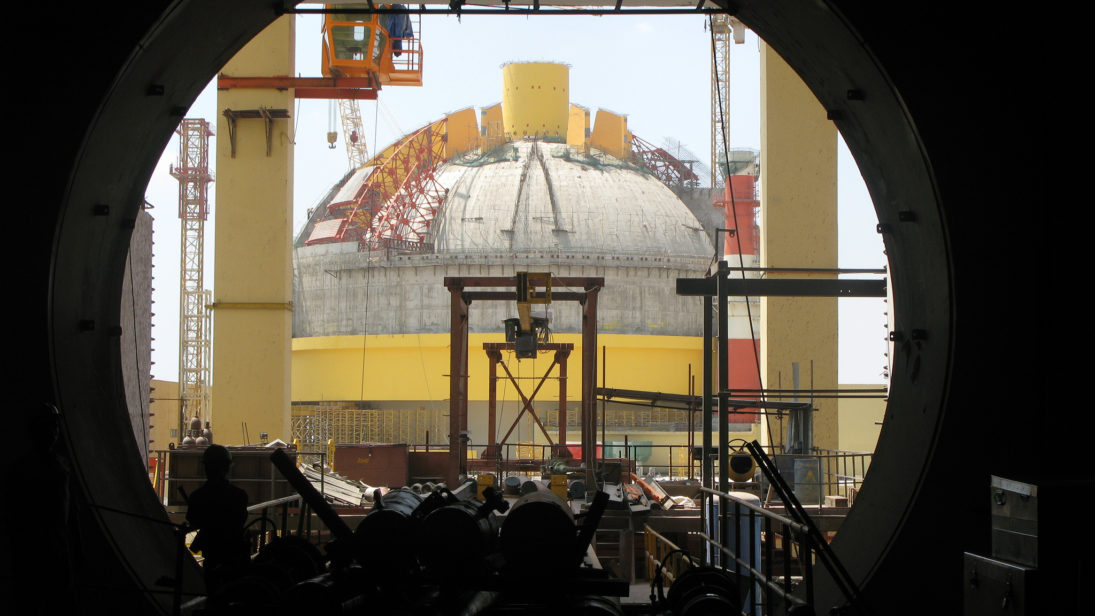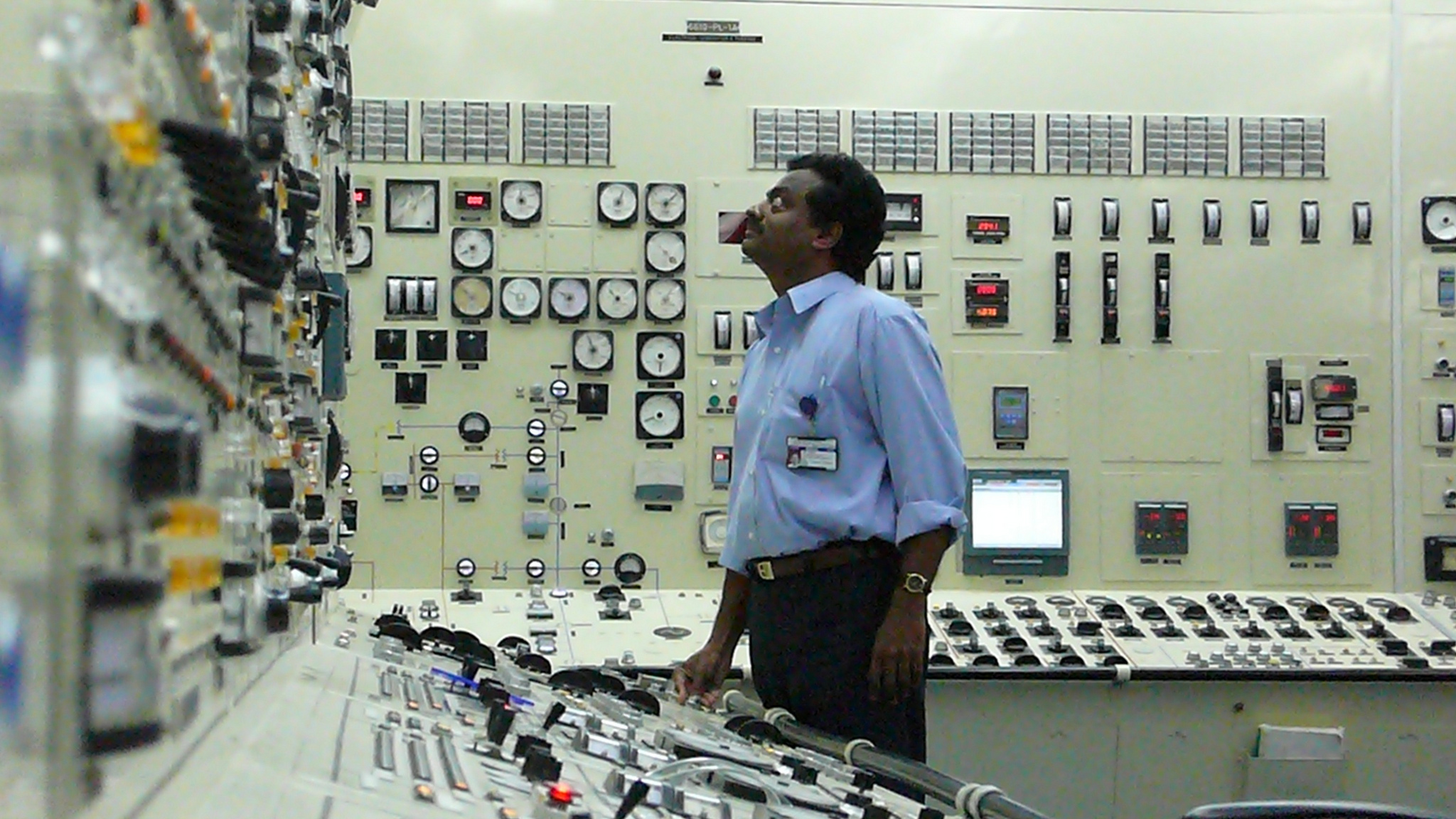
Since India and Pakistan became nuclear-armed powers in 1998, the contentious and escalatory dynamics between these two rivals have been a point of concern not just for South Asia, but also the rest of the world. Yet while the international community often directs its attention to nuclear competition in South Asia, intervening diplomatically in times of crisis, another issue of concern regarding sensitive nuclear issues has begun surfacing: concerns over the need to secure weapons-usable civilian nuclear materials from unauthorized use. While the Nuclear Security Summits made progress towards minimizing and, where possible, eliminating the civil use of highly-enriched uranium (HEU), the same restrictions have not been applied to separated plutonium, though the insecurity of reactor-grade plutonium also poses dire security risks.
Globally, separated plutonium stockpiles have continuously increased due to the expansion of commercial nuclear energy programs, particularly since the process of separating plutonium has outpaced the reuse of this plutonium into nuclear power reactors. In South Asia, both India and Pakistan continue to develop their nuclear energy programs. Much like other developing countries, India has rising energy requirements, which it intends to meet in part with an immense nuclear energy initiative. Over the years, the share of the nuclear energy has been small due to the unavailability of uranium and other technical issues related to its indigenous nuclear program. However, India has developed a unique fuel cycle to exploit its natural thorium reserves. To this end, New Delhi has continued to push forward with its plan to increase the share of nuclear energy output as an alternative source of energy; by 2050, the country aims to supply 25 percent of its electricity from nuclear power.
To address concerns on the insecurity of civilian plutonium stockpiles in the context of South Asia’s emerging nuclear energy sector, scholars Sharon Squassoni and Cindy Vestergaard propose that India and Pakistan report their civilian plutonium stockpiles under the auspices of an existing nonbinding and voluntary framework, INFCIRC/549, or “Guidelines for the Management of Plutonium.” Under these guidelines, the signatory countries agree to manage their civilian plutonium “in ways consistent with its national decisions on the nuclear fuel cycle and which will ensure the peaceful use or the safe and permanent disposal of plutonium.” At present, India possesses an estimated 400 kg of separated civilian plutonium under IAEA safeguards; this is the material that India would report were it to adhere to the guidelines laid out in INFCIRC/549. However, the argument for whether India should voluntarily exchange information on its civilian plutonium holdings needs to be examined on the grounds of India’s preexisting nuclear security and transparency commitments for its civilian facilities and stockpiles as well as the nonbinding nature of the INFCIRC/549.
India’s Preexisting Nuclear Security Commitments
The waiver India obtained from the Nuclear Suppliers Group (NSG) in 2008—backed by support from the United States—brought India into the fold of the global nonproliferation regime, enabling New Delhi to engage in international nuclear trade and the technical advancement of its peaceful nuclear program, though the country is not a signatory of the Nuclear Nonproliferation Treaty (NPT). In return, India agreed to allow safeguards from the International Atomic Energy Agency (IAEA) on a select number of its nuclear facilities that are classified as “civilian.” 14 of India’s 22 nuclear facilities are covered under IAEA’s inspections and nuclear safeguards.
Though voluntary information sharing mechanisms on sensitive issues like nuclear materials management as envisaged by INFCIRC/549 are valuable, India’s preexisting IAEA commitments present the first argument against India adhering to INFCIRC/549. With the majority of India’s civilian nuclear reactors already under the IAEA’s watch, why should India join an agreement for the voluntary exchange of information regarding its civilian plutonium stockpile? There is no real incentive for India to declare its civil inventories of plutonium separately.
Furthermore, India has already sufficiently demonstrated its commitment to addressing the concerns of potential theft of fissile material by non-state actors. Remaining true to its nonproliferation goals, India submitted its current nuclear security architecture (including legal, cyber, and personnel) at the 2016 Nuclear Security Summit and affirmed its willingness to strengthen nuclear security in the future under INFCIRC/869, or the “Joint Statement on Strengthening Nuclear Security Implementation.” In other words, India has already made significant multilateral commitments to bolster nuclear security as well as transparency of its civil nuclear program. Adherence to the INFCIRC/549 guidelines thus offers no distinct benefit to New Delhi.

INFCIRC/549 as a CBM: Nonbinding, Unverifiable, and Insufficient
Vestergaard and Squassoni argue that INFCIRC/549 could be a useful confidence-building measure (CBM) to “build trust and improve understanding of capabilities” between the two South Asian nuclear-armed rivals. However, the voluntary and nonbinding nature of the guidelines may fail to advance mutual trust between India and Pakistan in any significant way. Indeed, the absence of disciplinary actions against those who fail to comply with the guidelines opens INFCIRC/549 up to the following question: would exchanging regular notes on civilian plutonium stocks actually improve transparency between the two rivals?
To this point, not only are there no disciplinary actions against those who fail to comply by the guidelines in their reporting, but the standards for voluntarily reporting stocks often vary from country to country. Furthermore, there is no way of verifying the accuracy of the information reported. For instance, Japan failed to report 640 kg of civilian plutonium in two INFCIRC/549 reports due to a clerical error. The error was discovered—and promptly submitted to the IAEA—because of Japan’s atypical transparency in reporting its fissile materials, but the omission highlights there is no mechanism in the guidelines to verify the accuracy of reports. Therefore, if India or Pakistan wanted to mislead or omit some information about their civilian plutonium stockpiles in their annual INFCIRC/549 reports, they could easily do so.
Given the pitfalls of INFCIRC/549, the intentions of the guidelines would be better applied to South Asia in another manifestation. India and Pakistan already voluntarily exchange official lists of their nuclear facilities every year since 1988 under a bilateral confidence-building agreement to not attack each other’s nuclear facilities. Additionally, both comply by their pact to reduce the risks from accidents relating to nuclear weapons. Therefore, information sharing measures on sensitive nuclear issues at the bilateral level already exist. Despite loopholes, the two countries have largely kept their commitments under these agreements over the years. Since this system of sharing information already exists and successfully so, it may be more fitting for the declaration of civilian plutonium to be added to these existing agreements than for India to begin participating in an additional mechanism like INFCIRC/549.
Conclusion
In view of the above analysis, it is not evident how INFCIRC/549 can be an effective vehicle to address issues of nuclear security and increase transparency on civilian nuclear stocks within India and Pakistan. Rather, the concept of a CBM to increase transparency with regard to civilian plutonium holdings may be better suited to a bilateral agreement between the two countries. It is important to bear in mind that, historically, India has been pragmatic in its approach towards these existing nuclear regimes. For instance, New Delhi has signed the Additional Protocol, which entered into force in July 2014. However, it has agreed to join preliminary talks for the Fissile Material Cutoff Treaty (FMCT) on the grounds that it will not sign anything that is not “universal and non-discriminatory” in nature, implying India’s participation is contingent upon Pakistan’s reciprocity. It has also stood in opposition to the Nuclear Nonproliferation Treaty (because it divides the world into nuclear haves and have nots, instead of pitching in for complete nuclear disarmament) and the Comprehensive Test Ban Treaty (CTBT) (since nuclear powers like the United States have not ratified it) due to their discriminatory nature. This indicates that India will continue to show its keenness for signing multilateral information sharing agreements based on the virtue of equal participation of all members, as well as their practicality and effectiveness. INFCIRC/549, though a good idea, fails to be a sufficient antidote for the transparency woes surrounding global civilian plutonium stockpiles, and that is why India will stay away from it.
Editor’s Note:
Policy debates around participation in multilateral information-sharing mechanisms highlight fundamental tensions in nuclear-armed states between safety, national security, and international security. Assuring other states that fissile materials are securely managed against the global threats of illicit proliferation and nuclear terrorism is a widely recognized priority. Yet, there are compelling safety and security incentives for nuclear-armed states to keep information about their fissile material stocks secret. In South Asia, these tensions are further complicated by the unique histories of nuclear weapons in India and Pakistan and South Asian participation in global nuclear governance. Are voluntary information-sharing mechanisms regarding sensitive nuclear issues valuable?
In this SAV series, Muhammad Faisal, Maimuna Ashraf, Hina Pandey, and Pooja Bhatt respond to a recent paper by nuclear scholars Sharon Squassoni and Cindy Vestergaard. The paper proposes that South Asian nuclear-armed states voluntarily report their civilian plutonium holdings through participation in an existing multilateral mechanism, the Guidelines for the Management of Plutonium or INFCIRC/549. Contributors assess whether and how participation in multilateral information sharing on nuclear materials can enhance and/or hamper Indian and Pakistani national interests. Read the entire series here.
***
Image 1: IAEA Imagebank via Flickr
Image 2: IAEA Imagebank via Flickr


